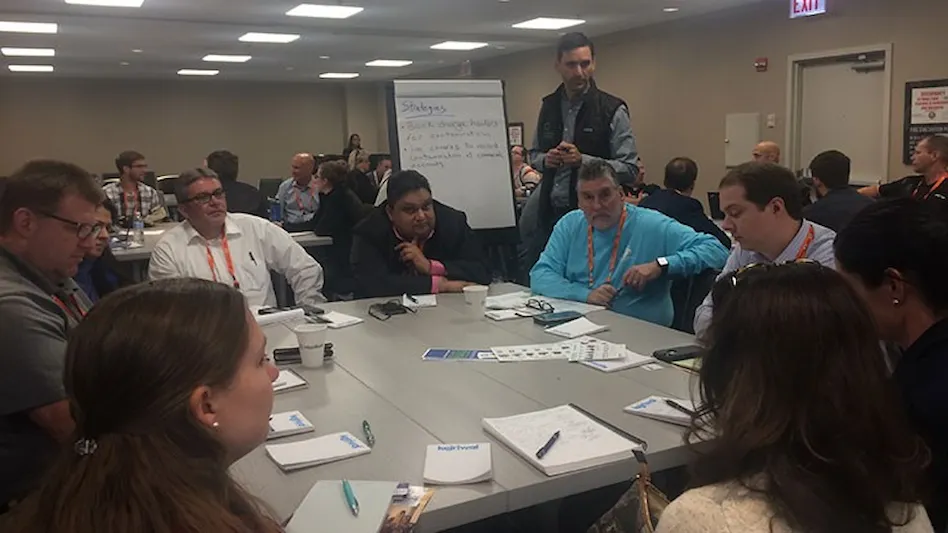
The Recycling Partnership, Falls Church, Virginia, thinks there are a lot of opportunities to improve municipal recycling efforts across the United States. According to The Recycling Partnership, about 47 percent of Americans don’t have automatic curbside recycling based on a 2016 SPC Access study. The Recycling Partnership also reports that about 60 percent of packaging is not being recovered in the home.
Additionally, The Recycling Partnership reports that more than 20 percent contamination rates are costing money and time, as well as causing safety hazards for workers.
“Infrastructure is lacking, there’s low performance in communities,” says Cody Marshall, vice president of technical assistance at The Recycling Partnership. “This is importance to all of us [in the recycling business]. The issue is contamination. There’s inbound contamination, and it’s affecting work streams.”

During a session on community education at Recycling Today’s Paper & Plastics Recycling Conference, The Recycling Partnership asked attendees to form small groups to discuss the issue of contamination with municipal recycling. Based on group discussions, the following are some of the attendees’ biggest contamination concerns: Plastic bags, batteries, food waste, way of collection (single-stream recycling), scrap metal, needles and medical waste.
So, The Recycling Partnership told attendees there need to be strategies to improve education in order to reduce contamination that comes in.
In the session, attendees discussed various strategies to combat contamination in the recycling stream to offer a return on investment. The following are things that were suggested:
• Back charging haulers for contamination
• Putting cameras in place to record contamination at commercial accounts
• Having penalties for noncompliance
• Putting visual examples in public places
• Offering community leadership programs
• Adding school education programs
• Banning plastic film bags
According to The Recycling Partnership, community education is a key tool that can be used to reduce contamination in recycling streams.
Chris Coady, senior technical assistance specialist at The Recycling Partnership, recommended material recovery facilities add education centers to their facilities. He said it’s important to make community education messaging simple.
“That means having clear and concise messaging that is easy for people to understand,” Marshall said. “Another key point with education is to clarify in real words and pictures for people to understand. Talk about the real pain points to get the message [about contamination] across.”
Coady also recommended that recycling operations have checklists available for people on what is and isn’t recyclable. He said some strategies for that include sending out mailers or placing tag cards on bins.
Marshall added that traditional mailers and postcards are better methods to provide community education than social media. While providing education via social media is helpful, he said people are still looking for education out of mailers, postcards and tags on bins.
Marshall said there’s cost to provide community education—he said it costs $1.50 to $2 for messaging to each household. However, he said some of that money can be reimbursed through partnerships and grants. It’s also a way to reduce contamination in the recycling stream.
“What we’re trying to do is look in the cart and give people a tactical approach to education so that there’s minimal work to do in order to inform as many residents as possible,” Marshall said. “Clarity of the information you share is important. With strategies, think about how your marketing team works and implement that at the curb. You need to make messaging clear. We too often say people are lazy, but people want clarity they are confused.”